The adoption of AI-powered chatbots has skyrocketed across industries this year, with 69% of businesses now integrating chatbots into their tech stack.
Even though many are eager to hop on the AI bandwagon, rushed chatbot implementations or overly complex solutions can burden companies with tools that are difficult to manage and fail to deliver results.
A winning chatbot implementation goes beyond installing cutting-edge software that is easy to use. True success lies in tailoring the chatbot to your business needs and significantly improving your customer support.
With the right approach, you can avoid common pitfalls and gain an edge over competitors in a crowded market.
Let’s take a look at eight essential steps to implement a successful chatbot strategy.
Implement a winning chatbot strategy with Lyro AI
1. Understand your customer needs
Before implementing a chatbot, take the time to thoroughly understand your target audience. What specific challenges do your customers face when interacting with your business? Are they frequently asking similar questions, struggling to find information, or seeking quick resolutions?
Start by analyzing customer interactions and user feedback to identify common issues or queries. Understanding what users expect can guide your chatbot’s design and capabilities.
Additionally, consider customer intents—the reasons behind their inquiries. Are your customers often asking about order statuses, delivery timelines, or product availability? Do they prefer live chat over email, or are they more inclined to interact via social media?
Here’s how to effectively gather insights:
- Review past customer support tickets to identify recurring themes
- Conduct short chat surveys asking customers about their preferred ways to communicate
- Use tools like website heatmaps to see which pages users spend the most time on.
Here’s another example: if your customers often inquire about order tracking or delivery timelines, your bot should prioritize these functionalities. Chatbots like Lyro AI pull data from your order management system to provide instant updates, saving valuable time for both your customers and your team.
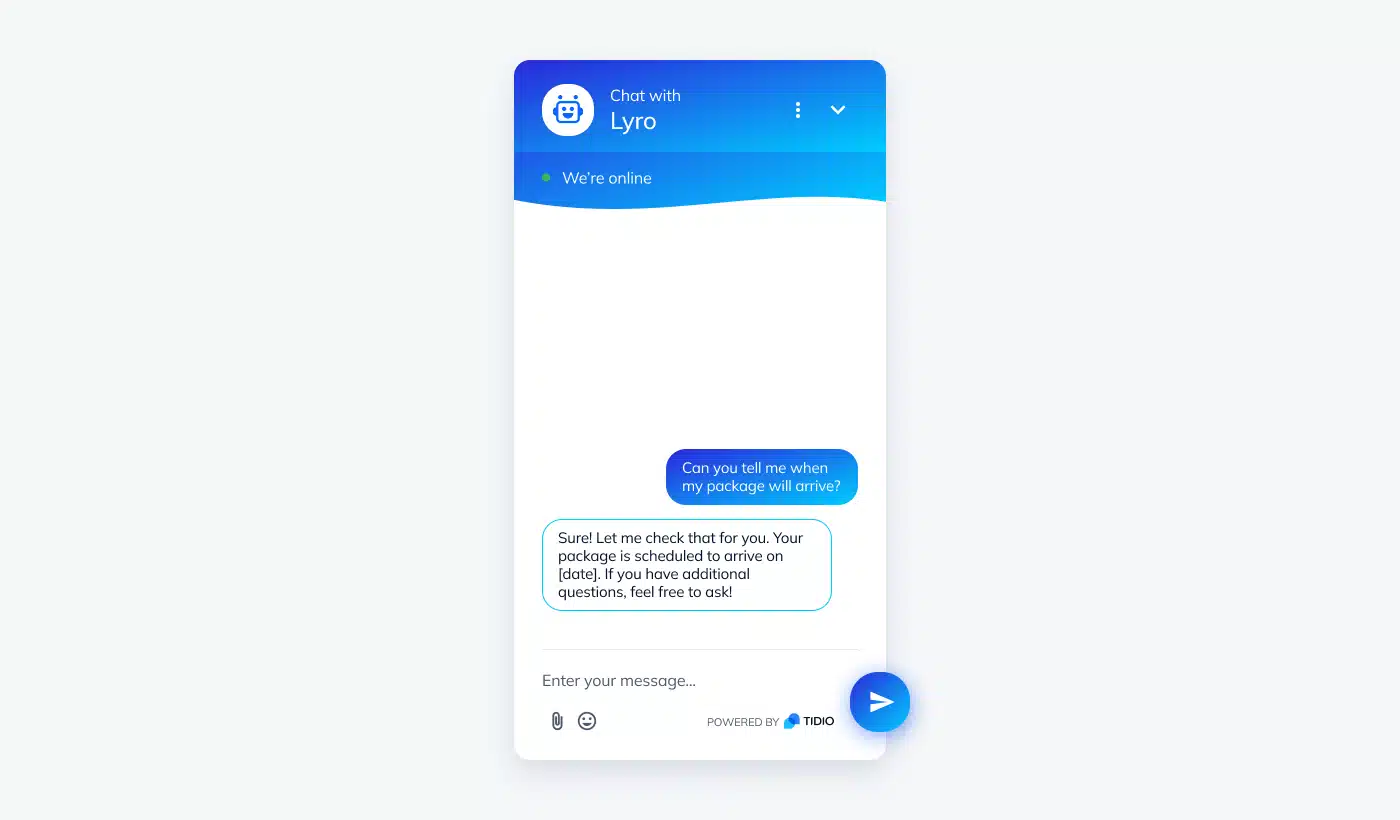
Read more: Check out the best customer service chatbots on the market, browse through real-life examples, and explore the benefits of using one.
2. Define your chatbot goals
Ask yourself a simple question—what do you want your chatbot project to achieve? Whether it’s reducing response times, capturing leads, or improving customer satisfaction, your objectives will guide your strategy.
Tools like Lyro AI chatbot can help achieve a range of goals, from automating repetitive inquiries to qualifying leads and moving customers down your sales funnels.
For instance, if your primary goal is to improve response times, your chatbot should be designed to handle common questions instantly and provide consistent support 24/7. Lyro helps you reach this goal by automating repetitive inquiries, like those about order tracking or product details. This allows your team to focus on more complex interactions.
If your goal is to increase pre-sales engagement, you can combine rule-based chatbot flows with Lyro to reach out to clients proactively. Rule-based flows can trigger proactive chat messages when visitors spend time on specific product pages or add items to their cart.
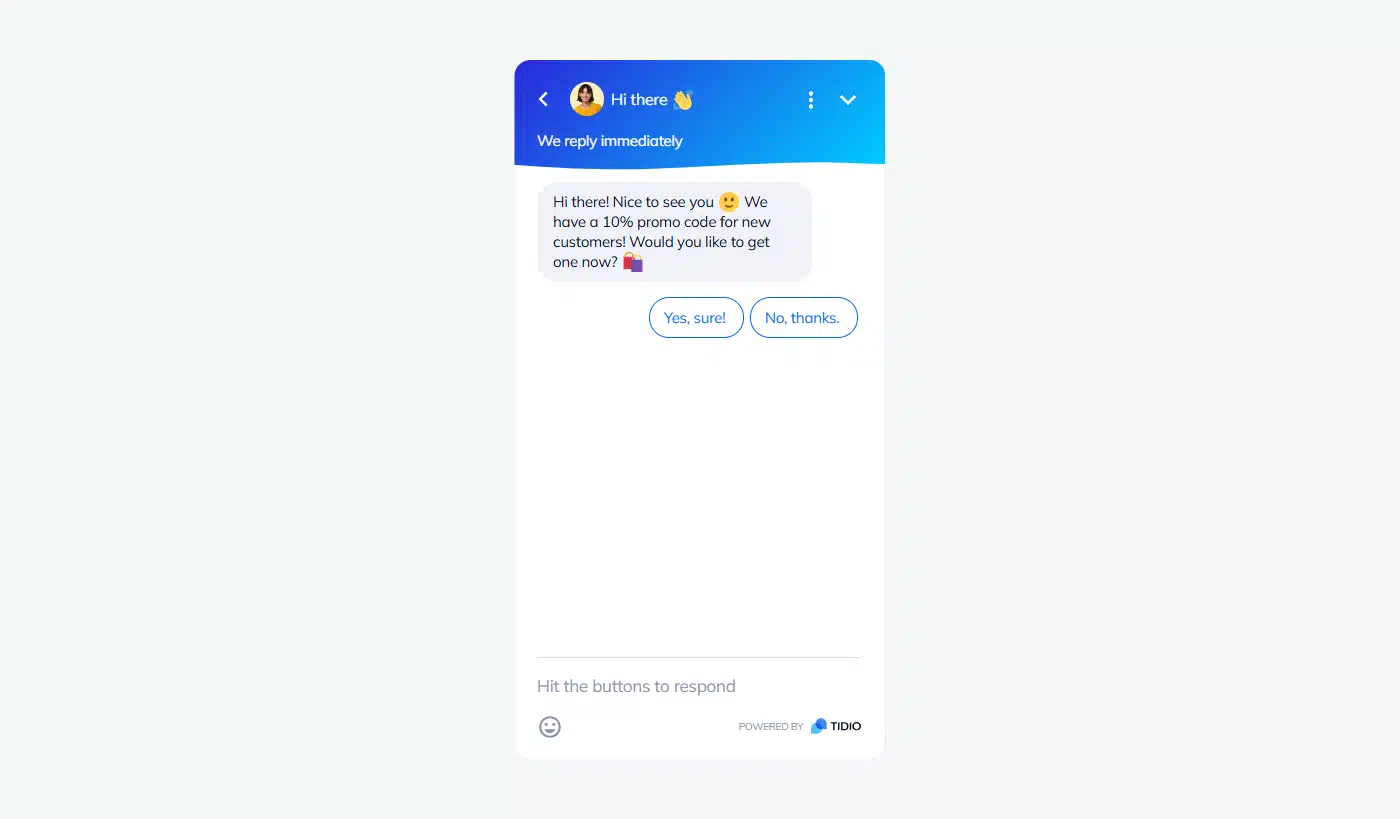
Once the customer responds, Lyro can seamlessly take over the conversation, providing in-depth, AI-powered assistance tailored to the customer’s needs.
Read more: Learn how Tidio’s support team successfully automated their service processes using Lyro.
3. Choose the right chatbot for your business
Not all chatbots are created equal, and selecting the right one depends on your business size, industry, and support requirements. The ideal choice should balance ease of use with the features your team and customers need.
A chatbot that combines simplicity with advanced functionality can be a game-changer for businesses of all sizes. Tools like Lyro, for example, offer multilingual support to serve diverse audiences. They integrate with platforms like Shopify and WooCommerce to handle tasks like order tracking and inventory checks.
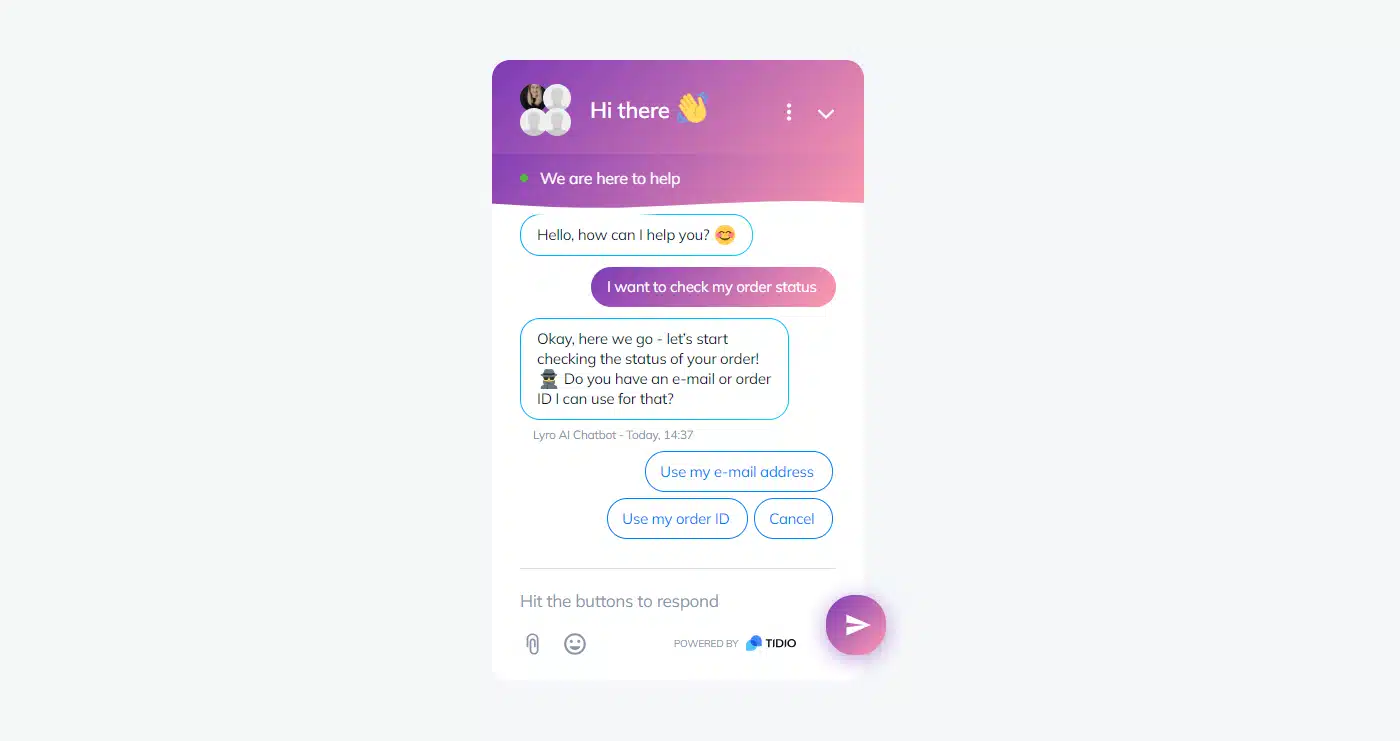
A flexible chatbot can do more than just address repetitive questions. By combining rule-based flows to engage customers with artificial intelligence and natural language processing (NLP) chatbots, you can create a seamless conversation flow that improves user experience. This is important as 35% of users turn to chatbots and conversational AI to solve complaints or receive detailed information.
Lyro also lets you set up custom tasks to handle specific customer needs, such as providing tailored discounts or processing order changes. This ensures your chatbot boosts service quality and supports growth.
Read more: Learn about different types of chatbots available.
4. Prepare your knowledge base data
Your chatbot is only as good as the information it provides. Before going live, ensure your knowledge base is comprehensive and up-to-date. Add answers to common customer questions, such as shipping policies, returns, and product details.
Lyro AI Chatbot simplifies this step by automatically pulling information from your database and adapting it to multiple languages without requiring manual updates. This allows you to answer all customers, no matter their language or location.
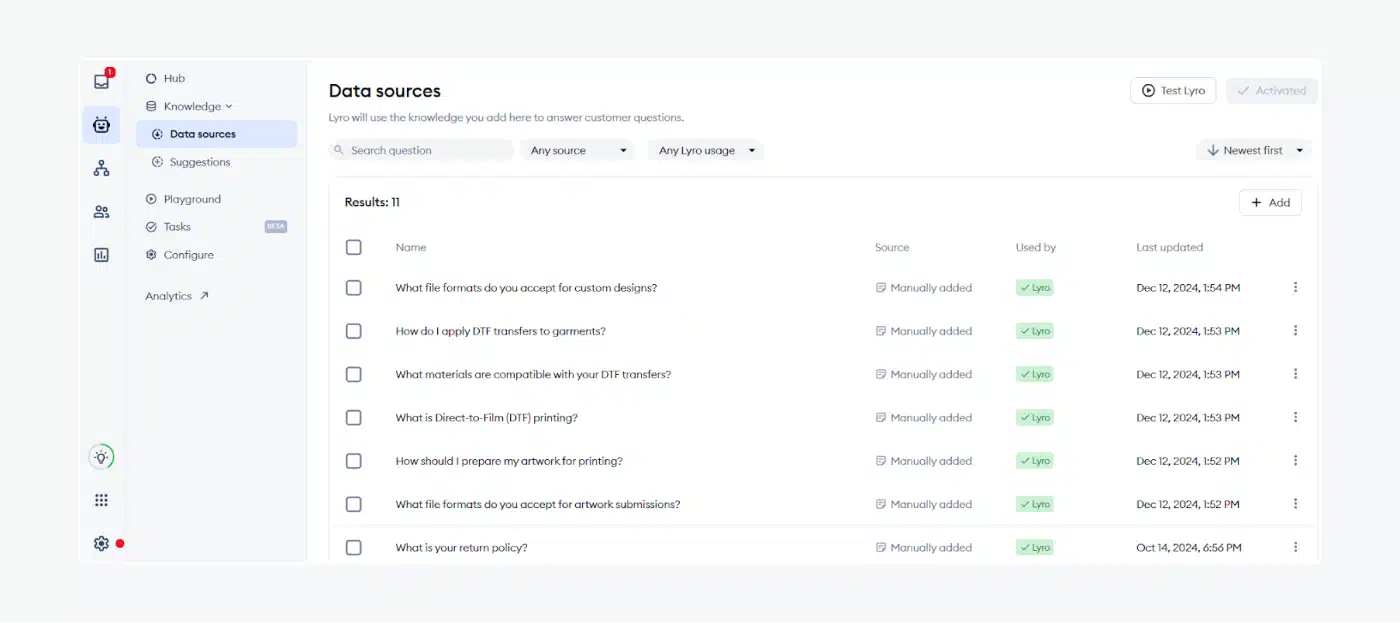
Lyro’s Data Sources feature makes it easy to build your knowledge base by adding and managing information in multiple ways—scanning specific website URLs, importing CSV files, or manually creating question-and-answer pairs.
Plus, the Suggestions panel highlights customer questions Lyro couldn’t answer so you can fill its knowledge gaps and make sure your chatbot stays reliable and helpful for your customers.
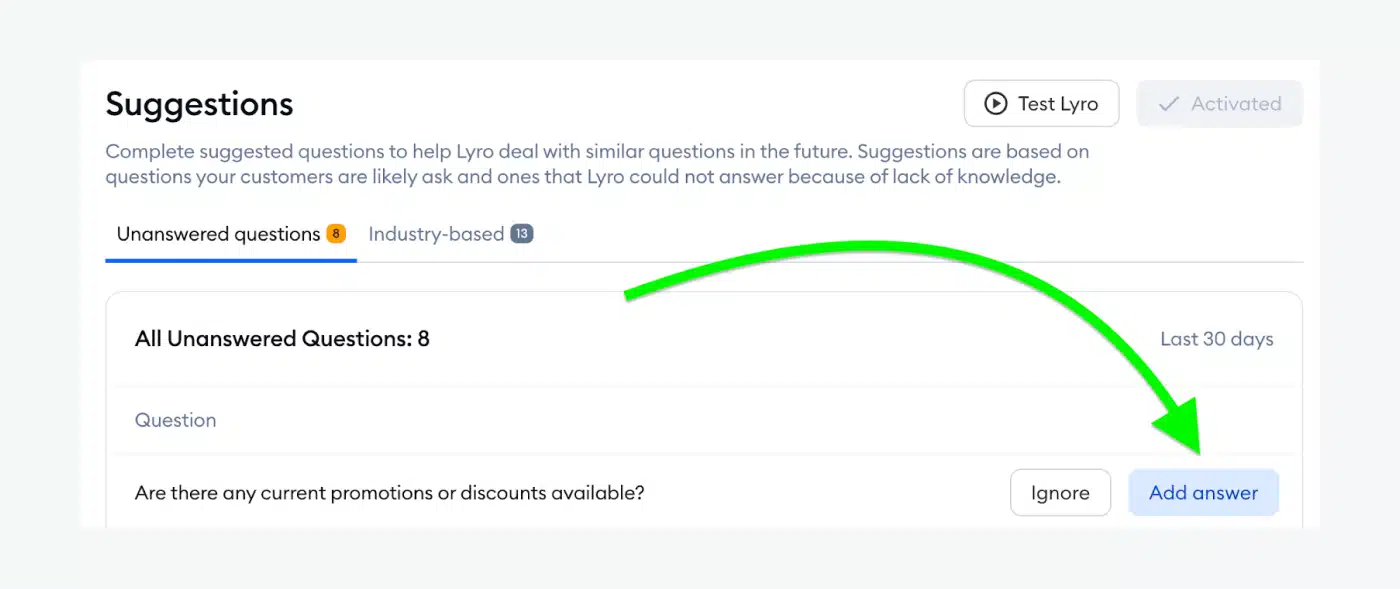
Read more: Check out the essential tips for building a great knowledge base chatbot.
5. Customize and personalize your chatbot
Customers appreciate a human touch, even when interacting with AI. Customize your chatbot’s tone of voice, appearance, and responses to reflect your brand’s personality.
With Lyro, you can easily adjust the chatbot’s tone using its Personality settings. Whether you want your chatbot to sound neutral, friendly, or formal, Lyro allows you to align its communication style with your brand identity.
You can enable or disable the use of emojis, change the name of your chatbot, and add a company description so that the bot can provide tailored responses to customers.
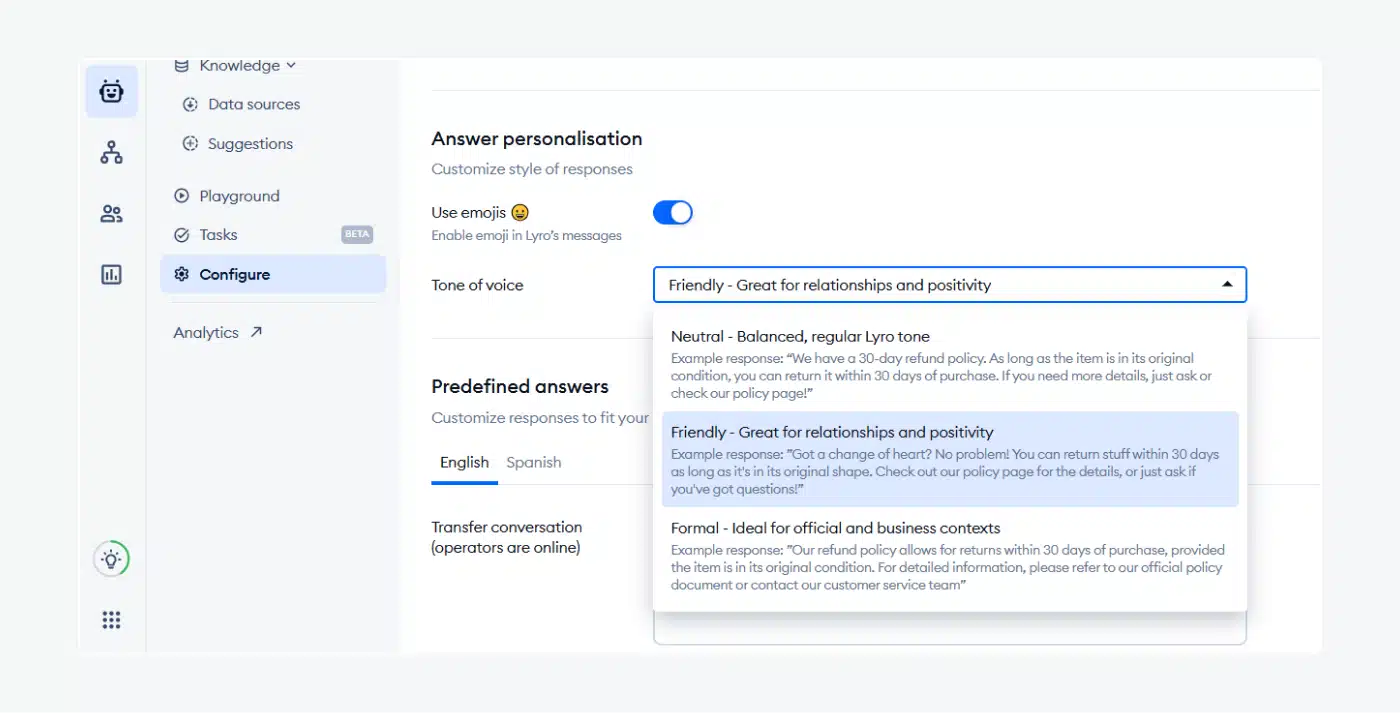
On top of Personality options, you can even add customized features, like recommending complementary products or offering personalized discounts. Lyro’s Tasks feature makes customization easy. For example, you can set up a task to automatically provide bulk order discounts when a customer inquires about large quantities.
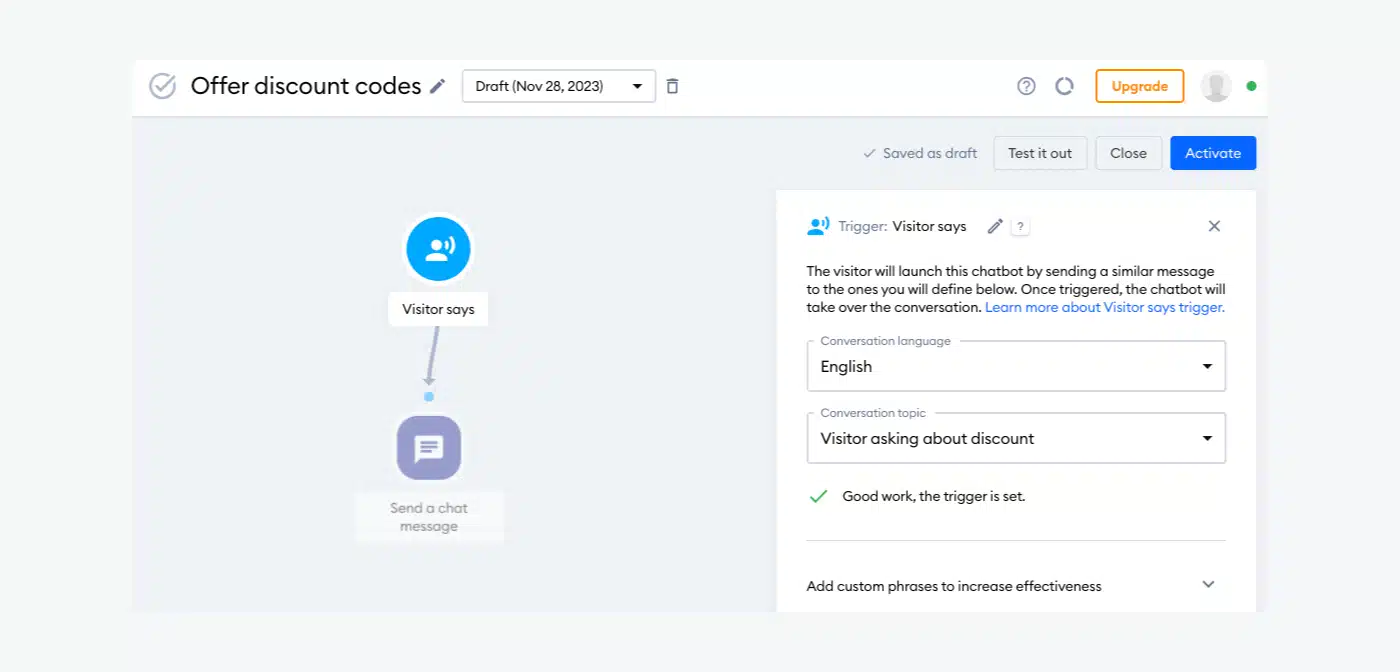
Similarly, you can create a task to recommend complementary products, such as suggesting heat-resistant transfer paper when a customer asks about Direct-to-Film printing.
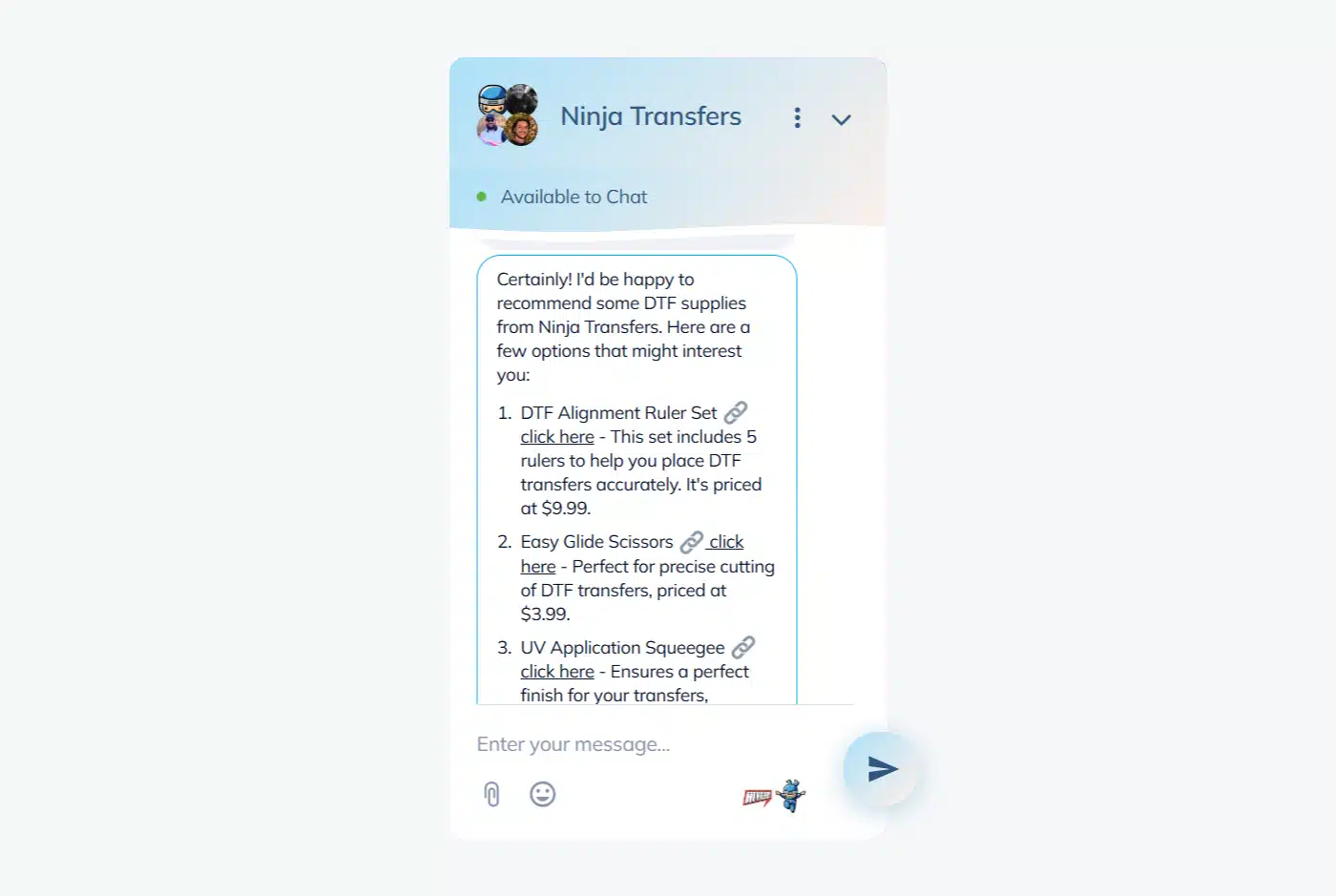
6. Test your chatbot before going live
Chatbot testing is an essential step to ensure your chatbot works as intended. Simulate various customer interactions to identify potential issues and fine-tune responses. Pay close attention to how well your chatbot handles complex questions and whether it transitions seamlessly to human agents when needed.
With Lyro, you can use the Playground panel to preview and adjust its responses during the testing phase, ensuring accurate answers even in challenging scenarios.
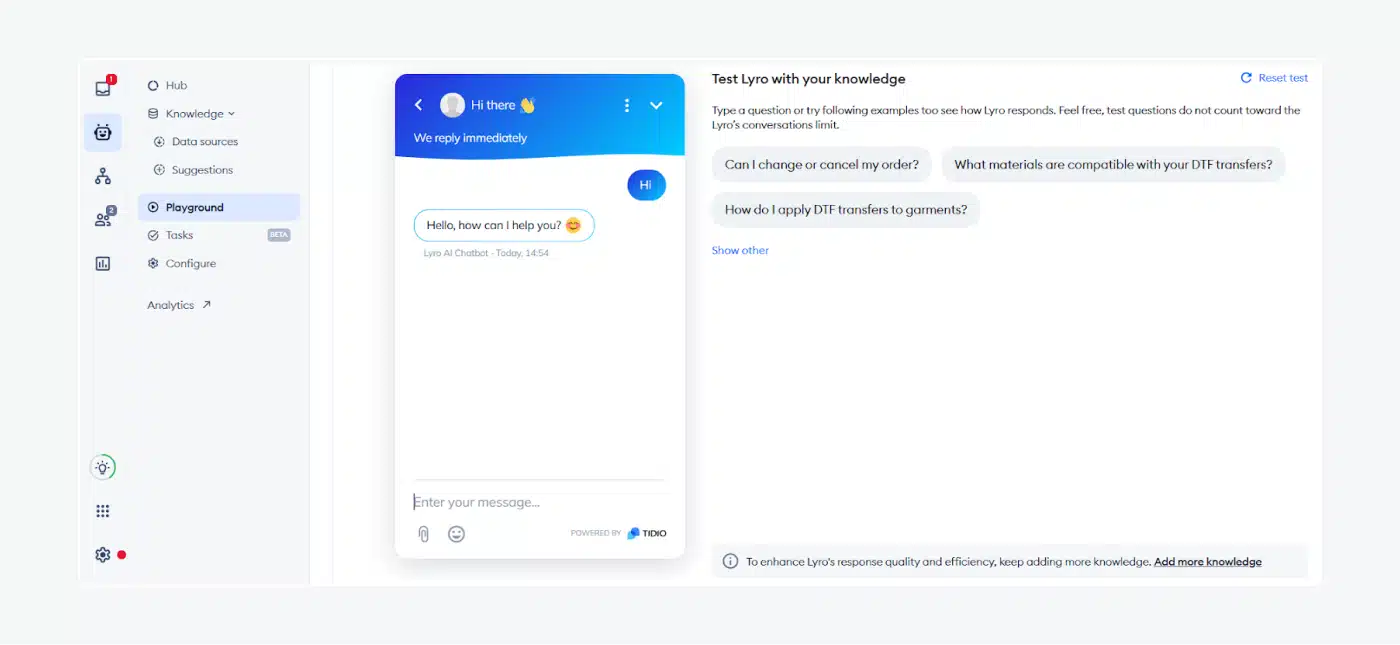
Additionally, Lyro’s Predefined answers allow you to customize how unresolved queries are transferred to human agents. You can tweak the messages sent during these transitions to match your brand’s tone and ensure the process feels smooth and professional.
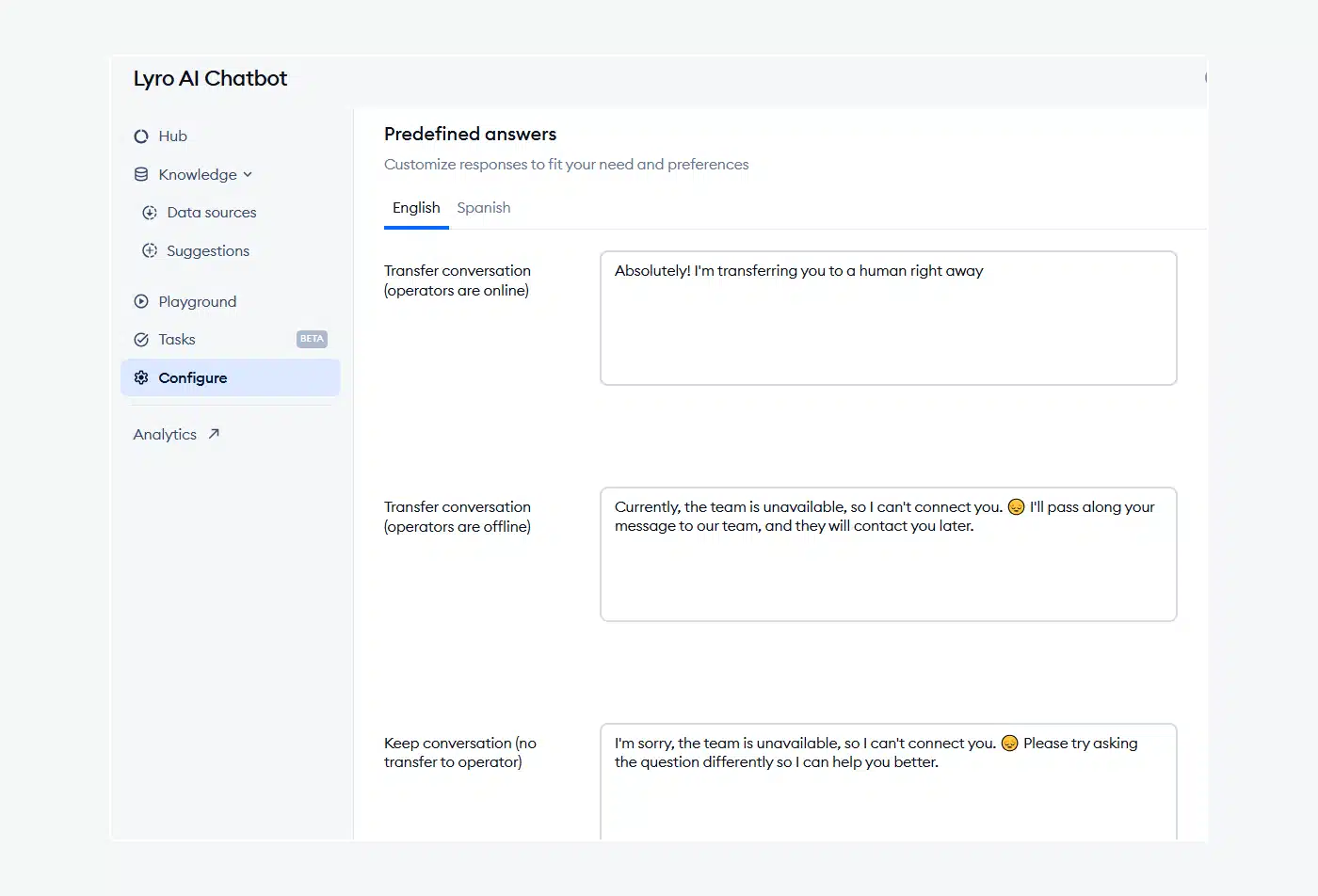
7. Launch and promote your chatbot
Once your chatbot is ready, it’s time to introduce it to your audience. Highlight its capabilities through banners on your website, social media posts, or email campaigns. Make sure visitors know they can use the chatbot for instant support or personalized recommendations.
Lyro makes promotion easy with its user-friendly chat widget that integrates seamlessly across channels, maximizing visibility. Whether customers interact with your chatbot on your website, Instagram, or WhatsApp, they’ll enjoy a consistent and helpful experience.
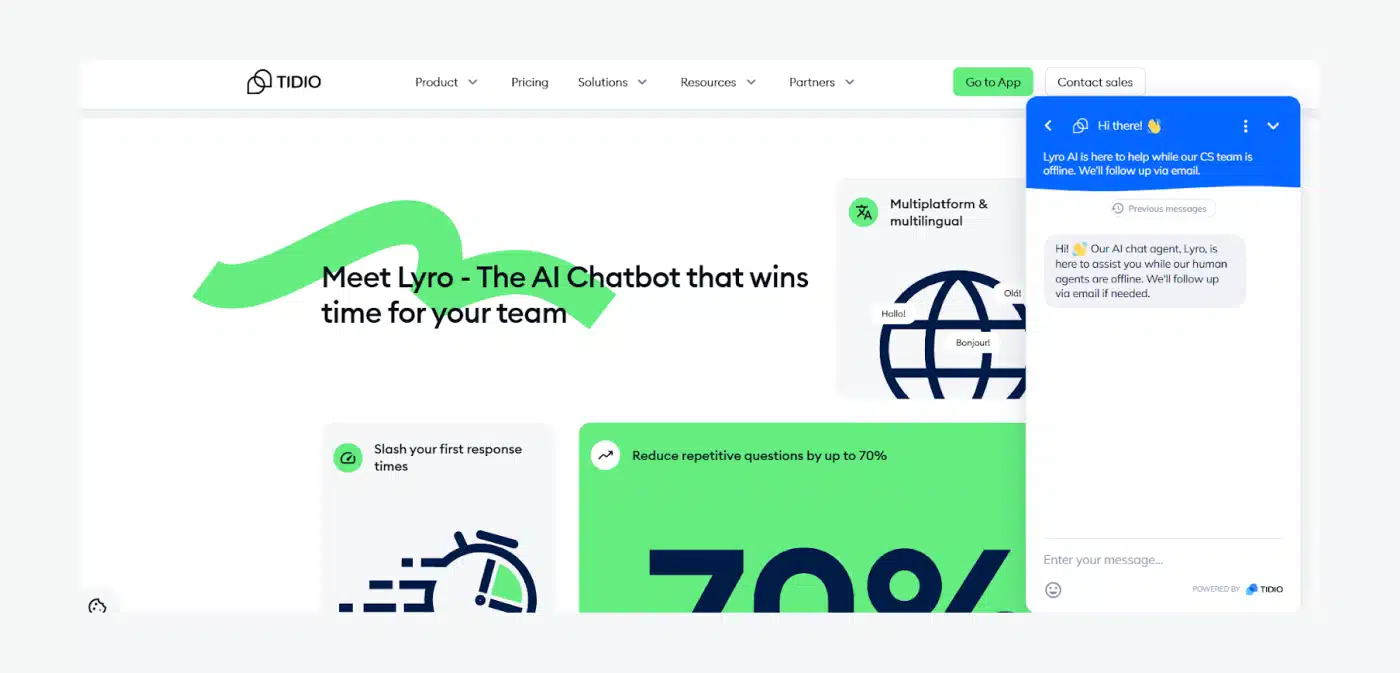
8. Continuously optimize
Chatbot optimization doesn’t end at launch. Regularly review its performance using analytics and customer feedback. Key metrics like resolution rate and customer satisfaction can reveal areas for improvement.
Lyro’s built-in analytics Hub provides actionable insights, such as unanswered questions and recurring customer issues. Use this data to refine your chatbot’s responses, update your knowledge base, and align your marketing strategies with customer preferences.
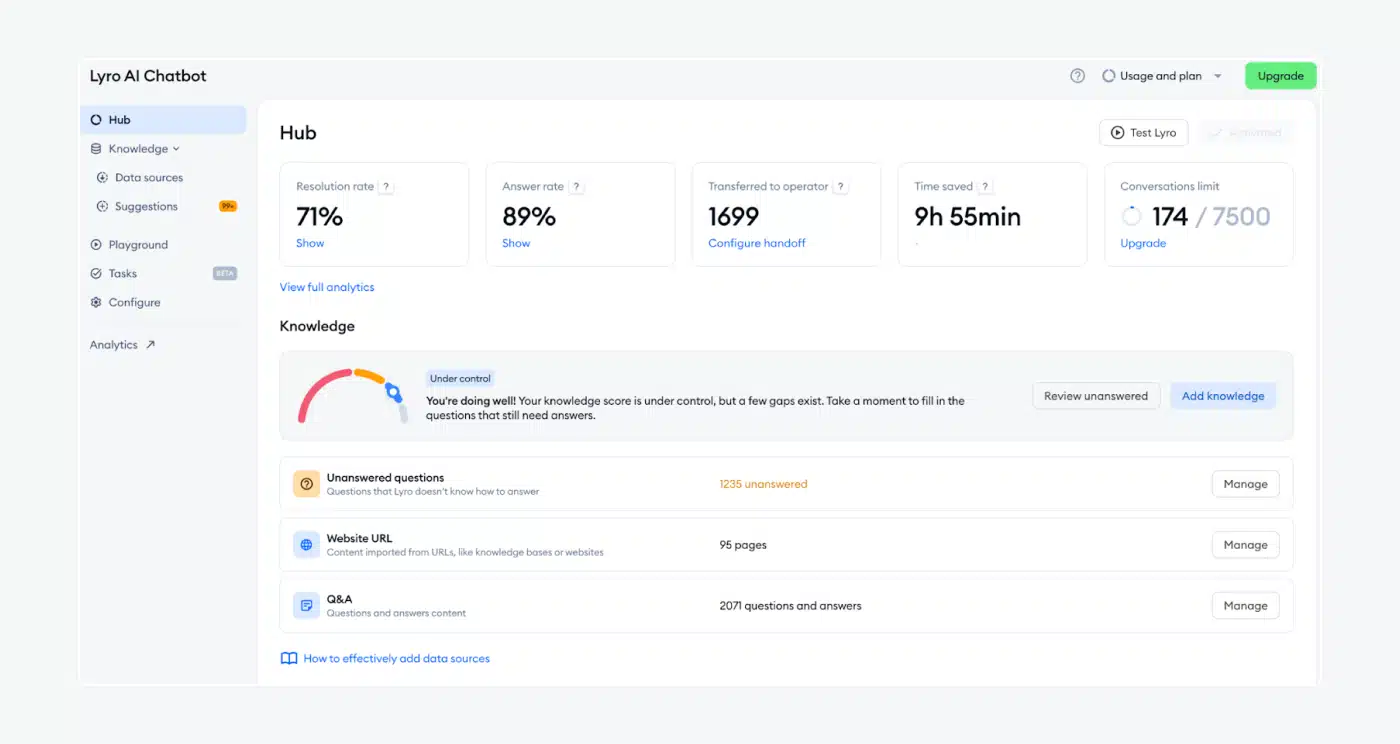
And there you have it. By following these steps, you’ll not only successfully implement a chatbot, but also maximize its impact on your business and deliver a seamless experience for your team and customers.
Create a seamless customer experience with Lyro AI chatbot
Why implementing a chatbot strategy is important for your business
Diving into chatbot implementation without a plan can lead to costly mistakes—frustrating customers, overloading your team with extra work, and falling short of your goals. A poorly implemented chatbot can create more problems than it solves, failing to deliver the expected ROI.
A thoughtful approach ensures your chatbot engages customers and reduces your team’s workload. Additionally, leveraging the latest chatbot technology helps your implementation stay relevant and consistently meet your customers’ needs.
Here are some key benefits of chatbot application:
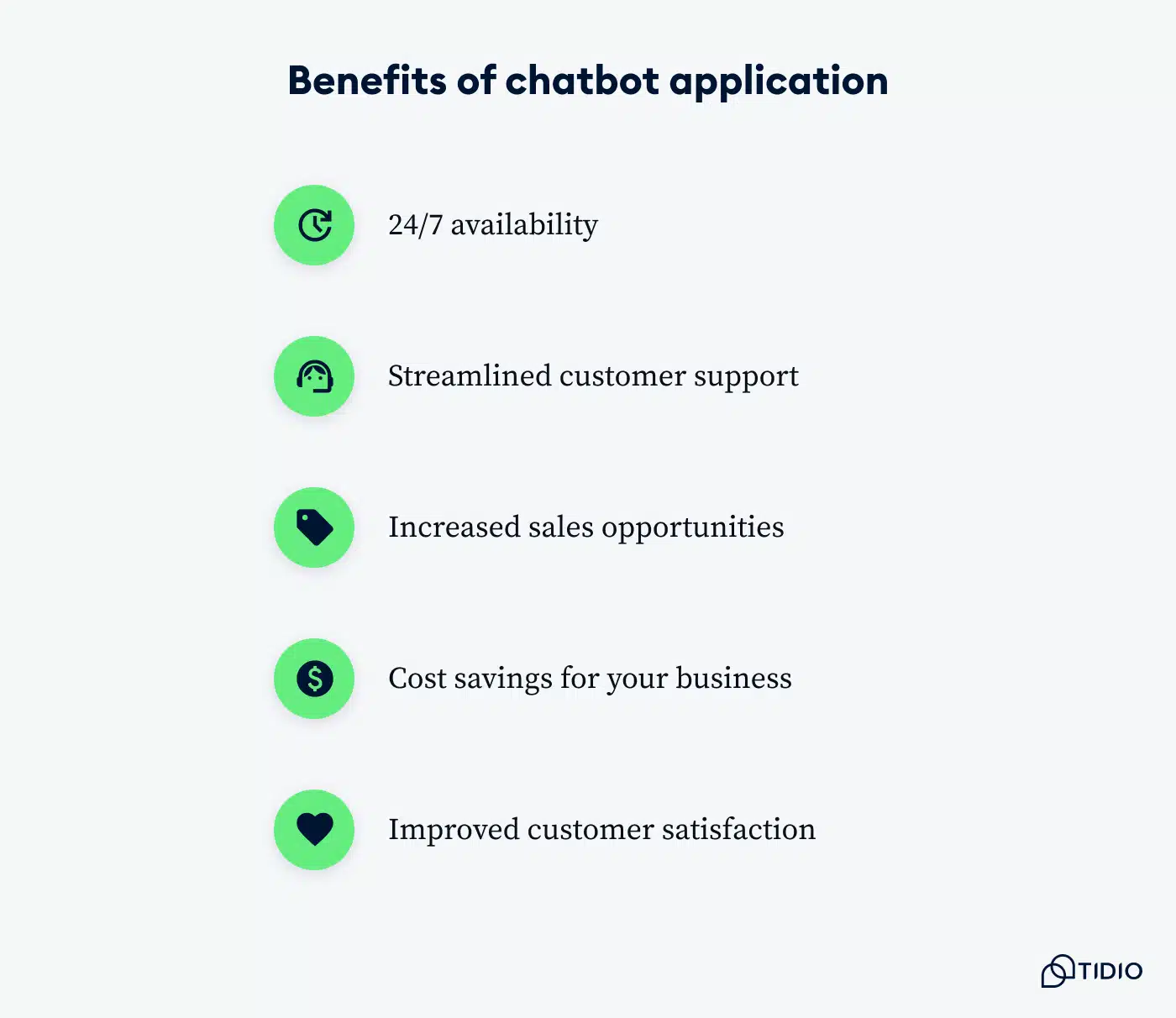
- 24/7 availability: Chatbots provide round-the-clock assistance, ensuring customers can get answers and solutions anytime, even outside business hours. As many as 64% of users regard 24-hour service as a vital chatbot feature.
- Streamlined customer support: Chatbot automation of repetitive customer queries frees up your team to focus on more complex tasks, improving overall efficiency.
- Increased sales opportunities: Chatbots can engage visitors, recommend products, and address pre-sales questions, helping convert browsers into buyers. Our own study on chatbots shows that 88% of users engage in at least one conversation with the bot, demonstrating its great potential for driving profit.
- Cost savings for your business: Automating interactions with a chatbot reduces the need for a large support team, cutting operational costs without compromising service quality.
- Improved customer satisfaction: With quick responses and personalized interactions, chatbots ensure customers feel valued, leading to higher satisfaction and loyalty.
Begin a successful AI chatbot implementation with Lyro
Starting your AI chatbot journey doesn’t have to be overwhelming. Whether you’re a small team seeking a quick setup or a larger organization with complex needs, following a clear implementation strategy is key to success.
Here’s what to consider for a solid implementation strategy:
- Define your goals: Clarify what you want the chatbot to achieve, like answering FAQs or generating leads.
- Prepare your data: Compile FAQs and customer insights to equip the bot with accurate responses.
- Set up and customize: Choose a platform, configure it to your needs, and align it with your brand’s tone.
- Test and launch: Run tests to ensure smooth operation before going live and optimizing performance based on feedback.
With Tidio’s Lyro AI chatbot, this process is intuitive and efficient. Lyro’s easy-to-use platform and flexible features help you configure your chatbot in no time, ensuring it meets your business’s unique needs while improving customer experience.
Be sure to give Lyro a try today!
Frequently Asked Questions
Implementing a chatbot involves several key steps: understanding your business needs, choosing the right chatbot platform, preparing your knowledge base, and customizing the chatbot to align with your brand. Once set up, test it thoroughly before launching. After going live, monitor its performance and make adjustments as needed to improve its functionality and user experience.
Implementing a chatbot means setting it up to interact with your customers across different platforms like websites, apps, or messaging tools. It involves connecting the chatbot to your knowledge base and teaching it to handle tasks such as answering FAQs, offering support, or helping users with sales inquiries.
The cost of chatbot implementation varies depending on the platform and the complexity of the setup. Basic chatbot solutions can start as low as $20–$50 per month. On the other hand, AI chatbots with custom integrations can range from $1,000 to $10,000 or more for setup and ongoing maintenance. Many platforms, like Tidio, offer free or affordable tiers for small businesses to get started.
The time to implement a chatbot depends on its complexity. For simple setups, it can take as little as a few hours or days. For more advanced chatbots requiring customizations and integrations, the process may take anywhere from 30–60 days. Proper planning and testing are key to a successful rollout, regardless of the timeline.

